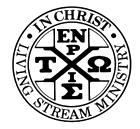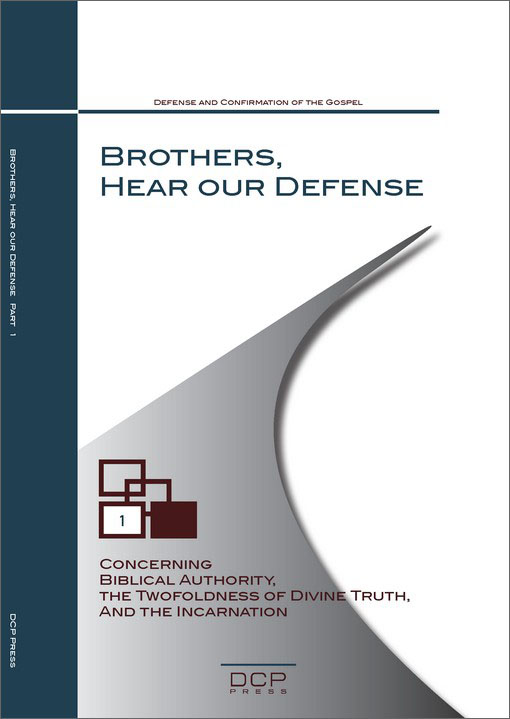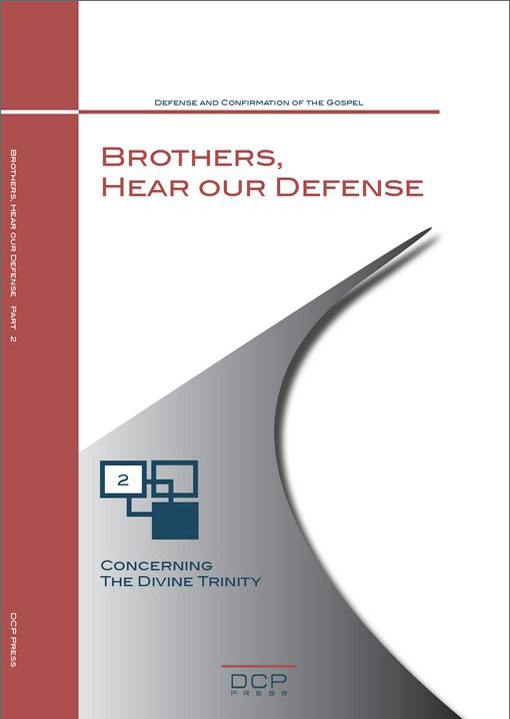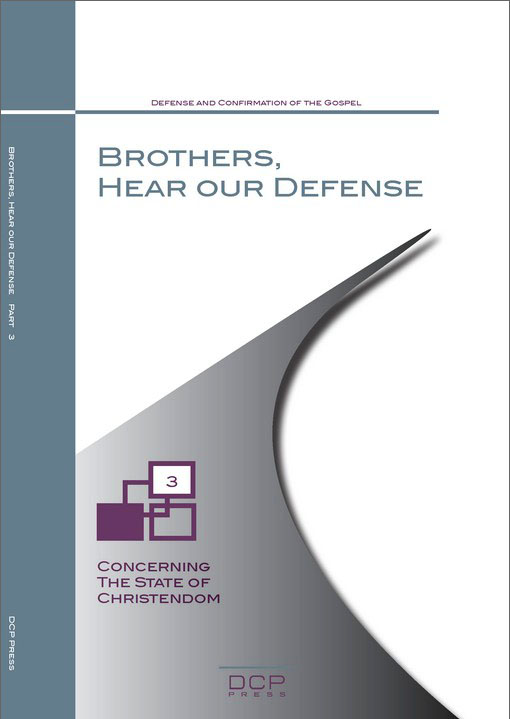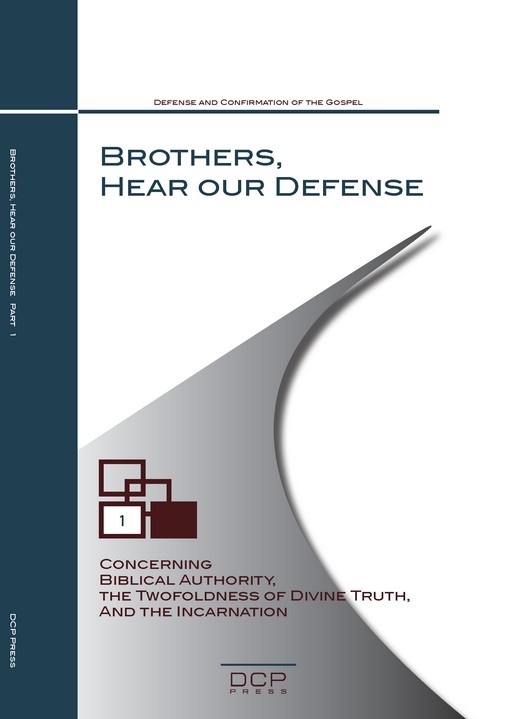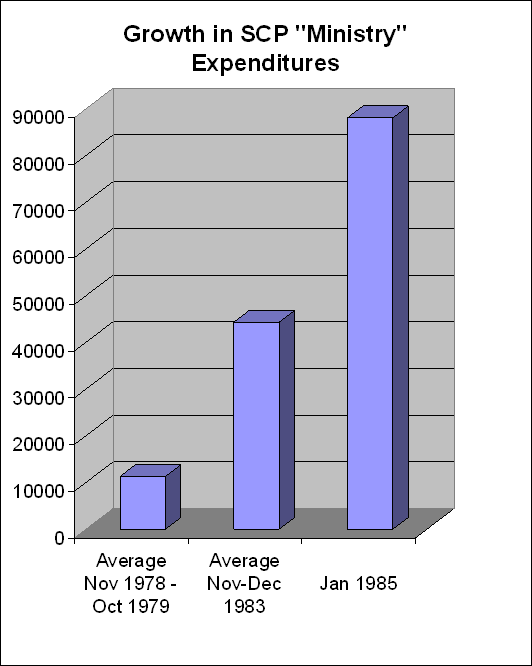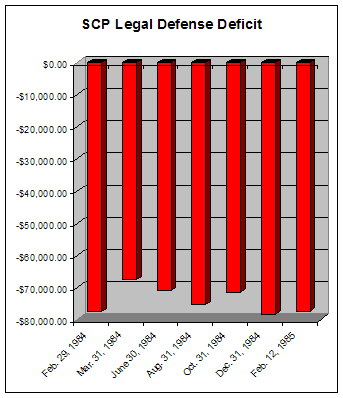Read this document as a PDF
In “A Response to the Christian Research Journal’s Recent Defense of the ‘Local Church’ Movement” (henceforth “Response”), Norman Geisler and Ron Rhodes excerpt isolated words and phrases from a single chapter of The God-ordained Way to Practice the New Testament Economy (henceforth Practice) by Witness Lee, which they then characterize as “slanderous” and as “religious libel.” Geisler and Rhodes both misrepresent Witness Lee and the local churches and apparently defend the Roman Catholic Church (RCC) against Witness Lee’s critique. They write:
Chapter Three from a book by Witness Lee titled, The God-Ordained Way to Practice the New Testament Economy in which he engages in a slanderous attack on … “today’s Catholic Church.” …[Lee says that] The Roman Church is infested with “Satan’s evil spirits” and “full of all kinds of evils. Evil persons, evil practices, and evil things are lodging there.” It is an “adulterous woman who added leaven (signifying evil, heretical, and pagan things).” It is “the Mother of the Prostitutes” and an “apostate church.” Again, it is “full of idolatry,” “against God’s economy,” and “saturated with demonic and satanic things.” If ever there were grounds for religious libel, this would be it.
Geisler and Rhodes’ accusations in this part of “Response” closely parrot those addressing the same chapter of the same book on the Harvest House Publishers corporate website. Many of those accusations have been addressed in previously published articles,1 but Geisler and Rhodes do not refer to those articles in “Response.” This fault in their apologetic method may reflect their stated position that they have no need of further research concerning the local churches.2
Other articles on this site directly address Geisler and Rhodes’ accusations against Witness Lee’s criticism of Christianity as a whole and what they themselves have written critically about the RCC.3 This article will examine how Geisler and Rhodes:
Witness Lee’s Attitude toward Catholic Believers
Before addressing the particular complaints of Geisler and Rhodes, it is helpful to examine what they chose to omit concerning Witness Lee’s statements about Catholics in Practice. As with the criticisms of Christianity,4 where it was the system that Witness Lee criticized, not the believers, so it is with the RCC. Witness Lee is critical of the RCC as an institution, a system, but has positive things to say about believers who may be a part of the RCC. For example, in Practice Witness Lee says:
We love all our Christian brothers and respect them, yet we cannot agree with the religious system they are in. There are many genuine believers even in the Catholic Church, and some of them are seeking and devout. Yet the Catholic Church itself is full of idolatry.5
It is not Catholic believers who are the subjects of the criticisms noted by Geisler and Rhodes. Rather, it is the RCC as a system that embodies unscriptural teachings and practices worthy of objection. Geisler and Rhodes should have made this distinction clear to their readers, but they did not. Instead, in “Response” they said, “It is simply insufficient to counter this by producing an admission from the LC that there are true believers in other churches.” This statement not only misses the point; it obscures the teaching of Witness Lee on the matter. To say that some believers in the RCC are “seeking and devout” is more than “admitting” that there are some “true believers in other churches.” Additionally, Witness Lee proclaimed his love and respect for such believers.6 In saying that there are seeking and devout believers in the RCC, Witness Lee made a clear distinction between the believers—some of whom are seeking and devout, all of whom are to be loved and respected—and the system of the RCC. Further, Witness Lee’s statement was not an “admission” as portrayed by Geisler and Rhodes;7 it was a voluntary statement of fact offered as a clear delineation of what specifically was being criticized and what, or more precisely, who was not. It is simply indefensible that Geisler and Rhodes obscured this important distinction.
Although Geisler and Rhodes ignored this point, others, including Catholics, have recognized this distinction in Witness Lee’s teaching. Father John Saliba, a Jesuit Professor of Religious Studies at the University of Detroit Mercy, noted not only this distinction but also its importance. Saliba testified:
…first of all, Witness Lee doesn’t harp against the Catholic Church all the time. It is not like some evangelists do on television. So it occurs occasionally, and, I remember one quote … where he says, Love everybody, Protestant and Catholic included; so I said, At least, Witness Lee may interpret Revelation against my church, but he doesn’t hate me.8
Saliba’s objectivity is missing from “Response.” As Saliba noted, Witness Lee did not major in criticism of the RCC. Saliba also commented that Witness Lee’s position vis-à-vis the RCC was a typical Protestant position, describing it as “a common explanation”9 of Revelation 17. While he sometimes criticized the RCC and the system of Christianity, the focus of Witness Lee’s ministry was elsewhere, primarily on the riches of Christ and the experience of Christ as life for the producing of the church as the Body of Christ. As demonstrated below, when Witness Lee was critical of the RCC, his criticism was solidly based on the Bible and made with the focus of his ministry in view. These facts were ignored by Geisler and Rhodes.
The Scriptural Basis for Saying Evil Spirits Lodge in the Great Tree of Christendom
Geisler and Rhodes characterize Witness Lee as saying in Practice that “the Roman Church is infested with ‘Satan’s evil spirits,’” although “infested” was their supplied editorial comment. In fact, in the third chapter of Practice, the subject of Geisler and Rhodes’ attack, the words “Satan’s evil spirits” do not refer to the RCC directly. Rather, they refer to the “birds” lodging in the big tree of Christendom (Matthew 13:31-32). Christendom is a very broad term encompassing the totality of the organized religious system, including that which is only nominally Christian. Witness Lee said:
Another parable in Matthew 13 describes today’s Christendom as a great tree with great branches that become a lodging place for birds (vv. 31-32). This is the parable of the mustard seed. The mustard is an annual herb, which shows that the church should be like an herb to produce food. Instead it became a tree, a lodge for birds, having its nature and function changed. These birds refer to Satan’s evil spirits with the evil persons and things motivated by them (13:4, 9). They lodge in the branches of the great tree, that is, in the enterprises of Christendom.10
Witness Lee then used the RCC as an example of the evils that are inherent in Christendom as a whole. Rather than claim that the RCC is “infested with Satan’s evil spirits,” he taught that in the many branches of the big tree of Christendom there are places for the “birds,” Satan’s evil spirits, to lodge and exert their influence. In some cases, this evil influence has led some to “deny the resurrection of Christ and all the miracles in the Bible,”11 among other things elucidated in the same context. Surely Geisler and Rhodes cannot object to the fact that the widespread denial of these precious truths (as well as many others) in the enterprises of Christendom is due to the influence of Satan’s evil spirits. When Witness Lee’s statements are read in context, it is evident that his teaching has been seriously mischaracterized by Geisler and Rhodes.
Although Geisler and Rhodes may hold a differing interpretation of the parable of the mustard seed in Matthew 13, they should be aware that Witness Lee’s interpretation is not unique to him.12 For example, in speaking of this parable, G. H. Pember stated:
For, in changing to a tree, the mustard must strike its roots more deeply into the earth than, as an annual, it was intended to do, and so becomes a perennial, and puts forth great branches. And hence the fowls of the air, which in the first Parable, caught up and devoured the Good Seed, are able to come and lodge under its shelter.13
As regards the interpretation of the Parable, the grain represented the seed and principles sown by Christ in the world, out of which the Nominal Church grew: the description of its unnatural growth signified that those principles would be abandoned as the Age rolled on—a prediction which was very manifestly fulfilled.14
Lewis Sperry Chafer, founder of Dallas Theological Seminary (Rhodes’ alma mater and where Geisler once served as a faculty member) also interprets the parable negatively as concerning Christendom:
In the third parable Christ presents truth through the figure of the mustard seed and the tree. Again the testimony of history and the teaching of the parable agree. The very small beginning in the early days of the church has developed out of all due proportion in mere members and includes all professing Christendom. The great tree now shelters even the birds of the air. It is significant that the birds of the first parable are represented as catching away the good seed.15
In expounding the parable of the sower concerning the snatching away of the seed by the birds, the Lord said, “When anyone hears the word of the kingdom and does not understand, the evil one comes and snatches away that which has been sown in his heart” (Matthew 13:19). It is not at all a fanciful interpretation to say that the birds in the branches of the big tree of Christendom are the agents of the evil one, Satan.
Contrary to Geisler and Rhodes’ contrived reiteration of his statements, Witness Lee is in line the entire context of Matthew 13 as well as with other recognized Christian teachers in his application of this parable.16 In “Response” Geisler and Rhodes offer no hint that Witness Lee’s statement, “Satan’s evil spirits,” was taken from his teaching of the Bible and is based on the Lord Himself identifying the birds as the emissaries of Satan in verse 4 and 19 of Matthew 13.
Geisler and Rhodes’ accusation is altogether inconsistent with Rhodes’ writings. Rhodes has associated the RCC with the occult practice of spiritism, which he describes as the contacting of non-human spiritual entities and which he contends can lead to demon possession.17 Rhodes therefore links the RCC with evil spirits. Yet, he and coauthor Geisler feign indignation at Witness Lee’s interpretation of the birds in Matthew 13:32 as referring to Satan’s evil spirits.
Evil Persons, Evil Practices, and Evil Things
Geisler and Rhodes also object to Witness Lee’s statement that the RCC is “full of all kinds of evils. Evil persons, evil practices, and evil things are lodging there.”18 Their objection is curious since they both have linked the RCC with evil things and evil practices, as shown by a complementary article on this site.19 Geisler has objected to the veneration of Mary as “practical heresy,” “indistinguishable from worship”20 and a practice that “invites the charge of Mariolatry. And Mariolatry is idolatry.”21 Geisler has also stated that the many practices and teachings taken from paganism are among the main constituents of the RCC.22 Rhodes has associated the RCC teaching of purgatory with apparitions which he classifies as an occult practice, spiritism.23 Surely idolatry, pagan practices, apparitions, spiritism, and demon possession qualify as evil practices and evil things. One is left to speculate why Geisler and Rhodes object to Witness Lee’s teachings about the RCC.
History also testifies that Witness Lee was right in his criticism. Although there are many genuine, seeking believers in the RCC, it is true that there are many evil persons, evil practices, evil things, and much darkness in that vast organization. It is unreasonable to think that Geisler and Rhodes have forgotten the Reformation and events surrounding it such as the Spanish Inquisition and the Huguenot massacre—evil things carried out by evil persons. In speaking of the massacre of the French Protestants known as the Huguenots, church historian Andrew Miller wrote:
And then, from the Pope downwards, the Catholic community lifting up their hands to Heaven and thanking God for the glorious triumph! At Rome the news was received with transports of joy. The bearer of the glad tidings was rewarded with a present of a thousand pieces of gold. The Pope caused the guns of the castle of St. Angelo to be fired, declared a jubilee, and struck a medal in honour of the event.24
Neither can Geisler and Rhodes credibly claim that the evils of the current international scandals in the RCC were not perpetrated by “evil persons.” The widespread evidence that the hierarchy of the RCC knowingly covered up crimes to protect the “good name” of the church testifies of the depth of the darkness there. These scandals alone are enough for reasonable persons to recognize that the RCC has evil persons, evil practices, and evil things residing in it. Both the historic matters and current events offered here serve as a small sampling of the evils that have characterized the RCC throughout history.
However, Witness Lee’s statement that there are evils in the RCC was not primarily based on opinion, history, or observation. His statements were based on the teachings of the Bible. Following his assertion of the evils in the RCC in Practice, Witness Lee referred to the parable of the woman hiding leaven in the fine flour (Matthew 13:33) as the source of his teaching. He linked the woman in the parable to the Old Testament Jezebel (Rev. 2:20; 1 Kings 21:25) and said that both Jezebel and the woman in the parable who added evil, heretical things (leaven) to the things of Christ (fine flour) represent the RCC.
The Woman Mixing Leaven with the Fine Flour
Witness Lee based much of his criticism of the RCC on the parable of the leaven in Matthew 13, but Geisler and Rhodes do not disclose this to their readers. They simply assert that Witness Lee says that the RCC is “an adulterous woman who added leaven (signifying evil, heretical, and pagan things).” Separated from its context, this statement is made to appear as a wild and baseless statement. However, in context it reads:
Another parable describing the situation of Christendom is the parable of the woman who took the leaven and put it into the fine flour (13:33-35). This woman, prophesied by the Lord in Matthew 13:33, is mentioned in Revelation 2:20. She was typified by Jezebel in the Old Testament and fulfilled by the Roman Catholic Church. The Roman Catholic Church became such an adulterous woman who added leaven (signifying evil, heretical, and pagan things) into the fine flour (signifying Christ as the meal offering for the satisfaction of God and man). The Catholic Church took in all kinds of pagan practices.25
It is evident that Witness Lee was teaching the Bible and in that teaching he referenced a few passages of Scripture that cover a great span of the Bible. Consider, in the context of Witness Lee’s teaching concerning the leaven in the parable in Matthew 13, Paul’s words to the Corinthian believers:
Your boasting is not good. Do you not know that a little leaven leavens the whole lump? Purge out the old leaven that you may be a new lump, even as you are unleavened; for our Passover, Christ, also has been sacrificed. So then let us keep the feast, not with old leaven, neither with the leaven of malice and evil, but with the unleavened bread of sincerity and truth. (1 Corinthians 5:6-8)
Although there are differing schools of interpretation concerning the parable of the leaven, there have been a great many respected teachers of the Bible who have interpreted it in a similar manner as Witness Lee.26 Therefore, Geisler and Rhodes should not act shocked; neither should they give their readers the impression that this interpretation is unique to Witness Lee. Concerning the parable of the leaven, C. I. Scofield taught:
The symbols have, in Scripture, a meaning fixed by inspired usage. Leaven is the principle of corruption working subtly; is invariably used in a bad sense … and is defined by our Lord as evil doctrine (Mt. 16.11, 12; Mk. 8.15). Meal, on the contrary, was used in one of the sweet-savour offerings (Lev. 2.1-3), and was food for the priests (Lev. 6.15-17). A woman, in the bad ethical sense, always symbolizes something out of place, religiously (see Zech. 5.6, note). In Thyatira it was a woman teaching (cf. Rev. 2. 20 with Rev. 17. 1-6). Interpreting the parable by these familiar symbols, it constitutes a warning that the true doctrine, given for the nourishment of the children of the kingdom (Mt. 4. 4; 1 Tim. 4. 6; 1 Pet 2. 2), would be mingled with corrupt and corrupting false doctrine, and that officially, by the apostate church itself (1 Tim. 4. 1-3; 2 Tim. 2. 17, 18; 4. 3, 4; 2 Pet. 2. 1-3).27
Elsewhere, Scofield made it clear that this apostate church is indeed the RCC.28 He also links the adulterous Jezebel of Revelation 2:20 to the RCC.29 Scofield’s teaching on this matter is similar to that of Witness Lee, yet Geisler and Rhodes agitate against Witness Lee and accuse him of being harsh and slanderous. However, there is no record that Geisler and Rhodes have accused Scofield—or the many others who hold similar interpretations30—of libel and slander.
It is ironic that elsewhere Geisler appears to support this application. Geisler contends that the RCC is a combination of four components: basic Christian truth, hierarchy borrowed from the Roman Empire, rituals from Old Testament Judaism, and a large dose of paganism.31 The basic Christian truth in Geisler’s list corresponds with the fine flour in the parable, while the other three items—hierarchy, ritual, and pagan things—correspond to the leaven. Geisler’s characterization of the RCC as an amalgamation of biblical truth, hierarchy, ritual, and paganism is similar enough to Witness Lee’s teaching that the RCC is the woman who mixes leaven (evil, heretical, and pagan things) with fine flour (Christ as the meal offering) to raise questions about Geisler and Rhodes’ virulent attack on Witness Lee in this matter.32 By assailing Witness Lee’s biblical criticism of the RCC, Geisler and Rhodes have placed themselves in the precarious position of tacitly defending the RCC against the very things they have accused it of elsewhere.
The Catholic Church as Mystery Babylon and Jezebel in Revelation
Geisler and Rhodes further contend against Witness Lee’s depiction of the RCC as “the Mother of the Prostitutes” and an “apostate church.” However, they again, as is their pattern, neglect to note that in saying these things Witness Lee is teaching the Bible. “The Mother of the Prostitutes” (or, harlots) is a direct quote from Revelation 17:5—”And on her forehead there was a name written, Mystery, Babylon the Great, the Mother of the Harlots and the Abominations of the Earth.” Therefore, since Witness Lee uses the words of the Bible, Geisler and Rhodes cannot possibly object to the language itself. Rather, it must be assumed that they object to the association of the RCC with the Babylon of Revelation 17. However, a great many respected Christian teachers share Witness Lee’s position that the Babylon of Revelation 17 is the RCC.33 Even many of those who teach that the Babylon of Revelation 17 is a future conglomeration of world religions also teach that the RCC will either be intimately involved with or lead this consortium. Lewis Sperry Chafer commented:
Revelation, chapter 17, describes the final ascendancy to governmental power on the part of the Church of Rome, and her judgments that must fall upon her.34
More explicitly, he states:
Two ‘Babylons’ are to be distinguished in the Revelation: ecclesiastical Babylon, which is apostate Christendom, headed up under the Papacy; and political Babylon, which is the Beast’s confederated empire, the last form of Gentile world-dominion. Ecclesiastical Babylon is ‘the great whore’ (Rev. 17.1)…35
Chafer, like many others, described the RCC as “apostate” and referred to ecclesiastical Babylon, headed up by the RCC, as “the great whore,” quoting from Revelation 17:1. Geisler and Rhodes should be well aware of the many other respected Christian teachers who have taught the same thing. Chafer, between the two portions cited above, quotes at length from Ford C. Ottman (Unfolding of the Ages, pp. 378-84) and C. I. Scofield to support his points. Witness Lee, using similar terminology, is not out of line with such teachers nor with the Bible.
In Practice, Witness Lee referenced G. H. Pember’s work The Great Prophecies, Alexander Hislop’s book The Two Babylons, and the Plymouth Brethren writers as others who hold similar views. Geisler and Rhodes hide all of these sources from their readers. While there are differing interpretations of the prophecy in Revelation 17, it is dissembling for Geisler and Rhodes to portray Witness Lee as isolated from the long line of Christian teachers with similar interpretations of Scripture in order to attack him as if he were an aberration.
Witness Lee bases his observation that the RCC is an “adulterous woman” on the apostle John’s letter to the church in Thyatira (Rev. 2:18-29), where there is such a woman named Jezebel who “calls herself a prophetess and teaches and leads My slaves astray to commit fornication and to eat idol sacrifices” (v. 20). In the Bible, God’s people are called to be a chaste bride (2 Cor. 11:2); for God’s people to engage in idol worship is called fornication and adultery (Jer. 2:11, 19-20; Num. 25:1-3). Without question the Old Testament Jezebel (1 Kings 16:31; 19:1-2; 21:23; 25-26; 2 Kings 9:7) caused Israel to incur judgment from God for these things. Revelation 2 refers to a New Testament Jezebel who is an adulterous woman. This woman’s identity, a matter Geisler and Rhodes avoid addressing, is central to interpreting the second and third chapters of Revelation and related Bible verses. Witness Lee plainly identifies this woman with the woman in Matthew 13:33 and the great harlot of Revelation 17:
The woman here is the same as the one prophesied by the Lord in Matt. 13:33. There the woman added leaven (signifying evil, heretical, and pagan things) into the fine flour (signifying Christ as the meal offering for the satisfaction of God and man). This woman is the great harlot of Rev. 17, who mixes abominations with the divine things. Jezebel, the pagan wife of Ahab, is a type of this apostate church.36
Concerning the church in Thyatira addressed in Revelation, Witness Lee considers it a prefigure to the RCC:
The Greek word means sacrifice of perfume, or unceasing sacrifice. As a sign, the church in Thyatira prefigures the Roman Catholic Church, which was fully formed as the apostate church by the establishing of the universal papal system in the latter part of the sixth century. This apostate church is full of sacrifices, as demonstrated in her continual Masses.37
Once again, Witness Lee is not alone in holding the view that the epistles to the seven churches in Revelation, although written to actual local churches in Asia Minor, depict the course of the church through its various stages from the early church (Ephesus) until the Lord’s return.38 Concerning Thyatira prefiguring the RCC, Andrew Miller stated:
In Thyatira, we have the Popery of the middle ages. Jezebel-like, practising all kinds of wickedness, and persecuting the saints of God under the disguise of religious zeal… Period—from the establishment of Popery to the Lord’s coming. It goes on to the end, but is characterized by the dark ages.39
This same view of the prophetic nature of the seven churches in general and the identity of Thyatira (Jezebel) in particular was espoused in one form or another by Lewis Sperry Chafer,40 C. I. Scofield,41 G. H. Pember,42 and Watchman Nee,43 among many others.44 Indeed, Watchman Nee said:
Here we want to note who Jezebel is. Jezebel is a woman. The woman in Revelation 17 refers to the Roman Catholic Church. In Matthew 13:13 the woman who took the leaven and hid it in three measures of meal is also the Roman Catholic Church. Naturally, therefore, the woman in Revelation 2:20 also represents the Roman Catholic Church.45
Rather than address any substantive matters of biblical interpretation, Geisler and Rhodes simply extracted fragments from Witness Lee’s teaching to inflame their readership without regard to truth.
Apostate Church
Geisler and Rhodes complain that Witness Lee is harsh and libelous when he refers to the RCC as an apostate church. However, referenced above are several noted Christian scholars who have also recognized and referred to the RCC an apostate church. Even some allies of Geisler and Rhodes hold this view.46
The three items Geisler cites as foreign elements in the RCC—hierarchy, ritual, and pagan practices—are in themselves enough to label the RCC as apostate. Geisler also criticizes many of the main teachings of the RCC as not only being unscriptural but also against the main principles of the gospel. He further contends that in practice the veneration of Mary is idolatry. If one adds all of Geisler’s complaints against the RCC together, it certainly looks like apostasy. Yet, he and Rhodes attack Witness Lee for stating the obvious, that the RCC is apostate.
As noted above, C. I. Scofield used the word apostate in describing the RCC. Ford Ottman, quoted by Lewis Sperry Chafer in his Systematic Theology,47 said of the RCC at the end times:
Such a condition shall assuredly be manifest in the apostate church just prior to the return of our Lord with the true Church. The indications are of such a character as to mark out more particularly the ecclesiastical system now known as the papal church. Romanism shall be in existence at the time, but more fearfully apostate than she has ever been. The definite marks here given are such as have in a general way characterized Romanism throughout the entire time of her history.48
Lest anyone think that it is only Christian teachers of the past who have called the RCC apostate, consider the following statement made by John MacArthur:
And perception is violated, particularly because the Catholic Church claims to be “true Christianity.” And when we reverse 450 years of history and just throw our arms around the Roman system—which I think we have to say, John, in all honesty is not a group of wayward brothers but is an apostate form of Christianity. It is a false religion. It is another religion.49
In the same panel discussion, R. C. Sproul echoed MacArthur’s sentiments, saying:
Somebody is preaching a different gospel. And when Rome condemned the Protestant declaration of justification by faith alone, I believe Rome, when placing the anathema on sola fide, placed the anathema of God upon themselves. And I agree with his [MacArthur’s] assessment, that the institution is apostate.50
[emphasis in original]
Both MacArthur and Sproul are well-known among evangelicals. For Geisler and Rhodes to single out Witness Lee’s criticism of the RCC and to ignore the chorus of evangelical voices who have likewise called the RCC apostate is yet another example of biased apologetics.
Conclusion—Geisler and Rhodes Condemn Biblical Teaching
Witness Lee has a solid scriptural basis for his statements concerning the RCC as well as the support of the strong testimony of many Christian teachers since the Reformation. Yet Geisler and Rhodes suppress these facts and characterize his biblical teaching as “harsh,” “slanderous,” and “libelous.”
Although Witness Lee did use strong and frank language in his criticism of the RCC, as does the Bible, this did not occupy a large part of his ministry, nor was it central to his message. Rather, his ministry focused on the crucial truths concerning the all-inclusive Christ as everything in God’s economy to become everything to his chosen and redeemed people to produce the church as the Body of Christ in this age and, as the ultimate consummation, the New Jerusalem in eternity, the mutual dwelling of God and man.
However, from time to time, as the need arose and as particular passages of the Bible required, Witness Lee did speak strong, frank, and healthy words concerning the condition of the RCC and its place in the revelation of the Bible. To do less would have been unfaithful. The Lord Himself often spoke frank and cutting words (for example, in Matt. 12:25-37; 16:1-12; 23:1-36). His servants cannot be asked to ignore such passages in the Bible or refrain from faithfully echoing the Lord’s assessments. Witness Lee spoke these words primarily to those within the local churches to warn them of the dangers inherent in not pursuing Christ and of practicing the church life without the reality of the living Christ. At no time were Witness Lee’s words unwarranted or inappropriate, let alone libelous or slanderous as Geisler and Rhodes state.
While Geisler and Rhodes have the liberty to disagree with Witness Lee’s interpretation of the various scriptural passages in question, they failed to address the relevant matters of truth in their critique. Instead, they employed a dishonest apologetic method, excising small snippets from Practice and arranging those “quotations” in such an inflammatory manner to incite their readers against Witness Lee and the local churches. They brandished about terms such as “slanderous” and “libelous” without supporting their charges. They obscured the fact that Witness Lee was expounding biblical prophecies and that his expositions had considerable historical precedent among respected teachers of the Bible. Some of these prophecies were uttered directly by the Lord Himself. All of them are part of the inspired Word of God. By separating Witness Lee’s commentary from the biblical passages he was commenting on, Geisler and Rhodes have deprived their readers of the opportunity to weigh the issues for themselves in light of Scripture. In effect, they have not allowed the Lord to speak to their readers through His Word and have deprived them of the chance to consider the Lord’s evaluation of the condition of His church.
Notes:
1See:
2In “Response” Geisler and Rhodes contend, “One argument used by CRI is that their conclusions in favor of the LC should be believed because they have done better and more research on the topic…more does not necessarily mean better. So, we can concentrate on what really matters… However, it is clear that truth does not always reside with the persons who have read more or studied longer. Rather, it rests with those who can reason best from the evidence. Further, there is really no new evidence available since CRI did its first research…” In this way Geisler and Rhodes justify ignoring recent articles that are directly relevant tothe subject at hand. Geisler and Rhodes’ claim of superior reasoning ability is in itself unreasonable. By their own admission, Geisler and Rhodes did not consider all available evidence. Their claim that no new evidence is available is absurd; since the mid-1970s LSM has published hundreds of titles that are relevant to the subjects at hand. Furthermore, the arguments made by Geisler and Rhodes give little indication that they studied even what was then in print, including the responses made to similar criticisms. They simply repeat the same tired arguments which were long ago refuted and ignore all evidence and reasoning contrary to their predetermined conclusions. In other words, Geisler and Rhodes’ claim of superior reasoning ability and concomitant slighting of a fellow apologist have no factual basis.
3See “Misrepresenting Witness Lee’s Critique of Christianity” and “Applying a Double Standard with Regard to Criticism of the Roman Catholic Church” on this site.
4See “Misrepresenting Witness Lee’s Critique of Christianity” on this site.
5Witness Lee, The God-ordained Way to Practice the New Testament Economy (Anaheim, CA: Living Stream Ministry, 1987), p. 28.
6Although critical of the RCC as a system, Witness Lee positively appraised individual Catholic writers many times. He often referenced Augustine and, less frequently, Aquinas. François Fénelon and Jeanne Marie Guyon are further examples of this. Witness Lee affirmed the sound and helpful content of their writings but cautioned against other portions that promoted asceticism, the worship of Mary, burning candles to idols, etc. The booklet The Practice of the Presence of God by Herman Lawrence Nicholas, a monk known as Brother Lawrence, is well-known among the local churches. There are other examples as well.
7Far from being an admission, Witness Lee and the local churches have always affirmed that the genuine believers in all of Christianity, including Catholicism, are fellow members of the Body of Christ:
From the very beginning we realized that despite the divisions, organizations, and traditions, there were a great number of genuine Christians scattered in these divisions. We saw that the Lord’s Body comprises all these genuine believers. Even in the Catholic Church we saw a number of genuine believers, and we also considered them as members of the church and as our dear brothers and sisters. On the one hand, we began to meet by ourselves and we fully realized that the dear, genuine believers who were scattered in the Catholic Church and the Protestant denominations were our brothers. We recognized them and we loved them. We realized that the Lord’s Body as the church of God did not only comprise us but also all the genuine believers, of which we were a small part. – Witness Lee, Elders’ Training, Book 4: Other Crucial Matters Concerning the Practice of the Lord’s Recovery (Anaheim, CA: Living Stream Ministry, 1985, 1998), pp. 123-124
8John A. Saliba, “The Testimony of John Albert Saliba, Ph.D.,” The Experts Speak Concerning Witness Lee and the Local Churches (Anaheim, CA: Living Stream Ministry, November 1995), p. 107. Although Saliba’s statement has been part of the public record since 1985, Geisler and Rhodes offer no indication that they are aware of it. This is yet another reason to reject their assertion that they need to perform no further research relative to the local churches.
9Ibid.
10Witness Lee, The God-ordained Way to Practice the New Testament Economy (Anaheim, CA: Living Stream Ministry, 1987), p. 26.
11Ibid.
12Witness Lee’s interpretation of this parable is substantially the same as that of many Bible teachers, including John Nelson Darby, Robert Govett, W. E. Vine, A.W. Pink, G. Campbell Morgan, G. H. Lang, J. J. Ross, Lewis Sperry Chafer, Herbert Lockyer, John F. Walvoord, and Ray Stedman.
13G. H. Pember, The Great Prophecies of the Centuries Concerning the Church, Vol. 4 (Miami Springs, FL: Conley & Schoettle Publishing, 1984), p. 341. In this portion, Pember refers the identity of the “birds” to the first parable in Matthew 13. In his exposition of that parable, Pember identifies the “birds” as “those fallen angels and spirits” and “those ever-watchful agents of Satan, the countless spirits of the air” (pp. 291-292). Pember’s description of the “birds” is similar to Witness Lee’s expression “Satan’s evil spirits.”
14Ibid., p. 342.
15Lewis Sperry Chafer, Systematic Theology, Vol. 4: Christology (Dallas, TX: Dallas Seminary Press, 1948), p. 352. See also Herbert Lockyer, All the Parables of the Bible (Grand Rapids, MI: Zondervan Publishing House, 1963), pp. 186-189.
16See note 12.
17Ron Rhodes, The 10 Most Important Things You Can Say to a Catholic (Eugene, OR: Harvest House Publishers, 2002), p. 106; Ron Rhodes, Reasoning from the Scriptures with Catholics (Eugene, OR: Harvest House Publishers, 2000), p. 241; and Ron Rhodes, Find It Quick: Handbook on Cults & New Religions (Eugene, OR: Harvest House Publishers, 2005), pp. 143, 182-186; cf. p. 278, Item 87. “Unbelievers Can Be Demon Possessed.” For a fuller explanation of Rhodes’ teaching, see “Applying a Double Standard with Regard to Criticism of the Roman Catholic Church” on this site.
18Witness Lee, The God-ordained Way to Practice the New Testament Economy (Anaheim, CA: Living Stream Ministry, 1987), p. 26.
19See “Applying a Double Standard with Regard to Criticism of the Roman Catholic Church” on this site.
20Norman L, Geisler and Joshua M. Betancourt, Is Rome the True Church? A Consideration of the Roman Catholic Claim (Wheaton, IL: Crossway Books, 2008), p. 181.
21Norman L. Geisler and Ralph E. MacKenzie, Roman Catholics and Evangelicals: Agreements and Differences (Grand Rapids, MI: Baker Books, 1995), p. 322. In the next paragraph, Geisler states, “…in practice there is no real difference between the veneration given to Mary and that given to Christ.”
22Geisler and Betancourt, op. cit., p. 181.
23Ron Rhodes, The 10 Most Important Things You Can Say to a Catholic (Eugene, OR: Harvest House Publishers, 2002), p. 106. These same sentences appear in Ron Rhodes, Reasoning from the Scriptures with Catholics (Eugene, OR: Harvest House Publishers, 2000), p. 241.
24Andrew Miller, Miller’s Church History: From the First to the Twentieth Century (London & Glascow: Pickering & Inglis, 1963), p. 959.
25Witness Lee, The God-ordained Way to Practice the New Testament Economy (Anaheim, CA: Living Stream Ministry, 1987), pp. 26-27.
26Witness Lee’s teaching on the parable of the leaven echoes that of many other respected expositors, including John Nelson Darby, Robert Govett, C. I. Scofield, W. E. Vine, G. H. Lang, A.W. Pink, G. Campbell Morgan, J. J. Ross, Lewis Sperry Chafer, Herbert Lockyer, Lehman Strauss, and John F. Walvoord. Many of these also make the association between the woman in the parable of the leaven in Matthew 13:33 and Jezebel in Revelation 2:20.
27C. I. Scofield, The Scofield Reference Bible (New York: Oxford University Press, 1945), p. 1016, note 3.
28C. I. Scofield, The Scofield Reference Bible (New York: Oxford University Press, 1945), p. 1346, note 1. “…ecclesiastical Babylon, which is apostate Christendom, headed up under the Papacy… Ecclesiatical Babylon is ‘the great whore’ (Rev. 17.1)…”
29C. I. Scofield, The Scofield Reference Bible (New York: Oxford University Press, 1945), p. 1331, note 3. “As Jezebel brought idolatry into Israel, so Romanism weds Christian doctrine to pagan ceremonies.”
30See note 26.
31Norman L. Geisler & Joshua M. Betancourt, Is Rome the True Church? A Consideration of the Roman Catholic Church (Wheaton, IL: Crossway Books, 2008), p. 184:
Current Roman Catholicism in general is a combination of four factors: (1) a basic Christian doctrinal core, (2) a Roman hierarchical structure (borrowed from the dying Roman Empire), (3) a Jewish ritualistic form (borrowed from the Old Testament), and (4) significant pagan content and practices.
32See “Applying a Double Standard with Regard to Criticism of the Roman Catholic Church” on this site for a more complete explanation.
33Others who have taught that Mystery Babylon the Great in Revelation 17 refers to Roman Catholicism include William Tyndale, John Huss, Martin Luther, John Calvin, John Knox, John Wesley, John Gill, Albert Barnes, John Peter Lange, John Nelson Darby, Andrew Miller, G. H. Pember, Robert Govett, Robert Jamieson, A. R. Fausset, David Brown, Charles H. Spurgeon, Charles Hodge, H. A. Ironside, C. I. Scofield, Arno C. Gaebelein, J. J. Ross, William R. Newell, Lewis Sperry Chafer, Louis Talbot, Lehman Strauss, Merrill F. Unger, John F. Walvoord, Walter Lewis Wilson, W. A. Criswell, and Donald Grey Barnhouse.
34Lewis Sperry Chafer, Systematic Theology, Volume IV (Dallas, TX: Dallas Seminary Press, 1948), p. 354.
35Ibid., p. 358.
36Witness Lee, Revelation 2:20, footnote 1, Holy Bible: Recovery Version (Anaheim, CA: Living Stream Ministry, 2003).
37Witness Lee, Revelation 2:18, footnote 1, ibid.
38Victorinus, the Catholic scholar Joachim, John Gill, Matthew Poole, John Nelson Darby, William Kelly, Andrew Miller, G. H. Pember, G. Campbell Morgan, F. W. Grant, A. B. Simpson, Joseph A. Seiss, C. I. Scofield, Arno C. Gaebelein, William R. Newell, H.A. Ironside, Louis Talbot, Ford C. Ottman, John F. Walvoord, J. Dwight Pentecost, Lehman Strauss, Donald Grey Barnhouse, J. Vernon McGee, and W. A. Criswell, among others.
39Andrew Miller, Miller’s Church History: From the First to the Twentieth Century (London & Glascow: Pickering & Inglis, 1963), p. 5.
40Lewis Sperry Chafer, Systematic Theology, Volume IV (Dallas, TX: Dallas Seminary Press, 1948), p. 353.
41C. I. Scofield, The Scofield Reference Bible (New York: Oxford University Press, 1945), p. 1331, note 3.
42G. H. Pember, The Great Prophecies of the Centuries Concerning the Church, Volume 4 (Miami Springs, FL: Conley & Schoettle Publishing, 1984), pp. 494-649.
43Watchman Nee, The Collected Works of Watchman Nee, Volume 47: The Orthodoxy of the Church & Authority and Submission (Anaheim, CA: Living Stream Ministry, 1994), pp. 3-102.
44See “Biblical Critiques of Christianity – Selected Bibliography and Biographical Notes on Sources Cited.”
45The Collected Works of Watchman Nee, Volume 47, op. cit., p. 45.
46See “Applying a Double Standard with Regard to Criticism of the Roman Catholic Church” on this site.
47Lewis Sperry Chafer, Systematic Theology, Vol. IV (Dallas, TX: Dallas Seminary Press, 1973), p. 354.
48Ford C. Ottman, Unfolding of the Ages in the Revelation of John (New York: Baker & Taylor, 1905), p. 378. The entire text of this book is available online at http://books.google.com/books?id=YKHf8xadOpIC on Google Books.
49John MacArthur, “Do Roman Catholics and Evangelical Protestants Now Agree?”, Defending the Faith, Volume IV (Chattanooga, TN: Ankerberg Theological Research Institute, 1995), p. 14. This article is a transcript of a panel discussion among MacArthur, R. C. Sproul, D. James Kennedy, and John Ankerberg. None of the four participants objected to this characterization of the RCC as apostate.
50R. C. Sproul, ibid., p. 16.
